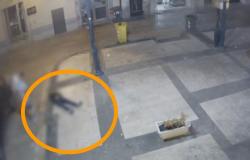If the entire planet is crumbling under plastic pollution, the African continent must face even more critical levels of pollution. This is why the discovery of this small larva of the small Kenya mealworm, a beetle belonging to the genus Alphitobiuscould change the situation. In fact, this species has the remarkable ability to break down polystyrenethis plastic omnipresent in our food, electronics and industrial packaging.
This finding is all the more significant as it concerns the first species native to Africa exhibiting this ability. Their work was published in the journal Scientific Report on September 12.
A unique degradation process
Among the insects, the larvae of theAlphitobius have a fairly unique digestive system. Researchers have identified specific bacteria in its intestine, including Proteobacteria et Firmicutescapable of degrading complex synthetic materials. Other bacterial genera work in symbiosis with these: Kluyvera, Lactococcus et Citrobacter, capable of producing enzymes specialized in the digestion of plastics.
This ability is not innate and comes from an evolutionary process: the insect’s intestinal bacteria gradually adapt to this unusual diet, modifying their composition to optimize plastic degradation.
The life cycle of this remarkable insect extends over 8 to 10 weeks in the larval state. Although originally from Africa, the species has now spread worldwidefavoring warm and nutrient-rich environments such as chicken coops. The researchers also suspect that the strain studied could constitute a unique subspecies of the genus. Alphitobiusa hypothesis currently under investigation.
Impressive performance under conditions
Experiments carried out over a month revealed that these larvae, when fed a mixed diet combining wheat bran and polystyrene, manage to degrade 11.7% of the plastic ingested. This is why a balanced diet; that is to say not only based on plastic; is necessary. Larvae fed only plastic survive, but lose efficiency after a certain time. Complete nutrition is therefore required to optimize the degradation process.
Analysis of the digestive system of the larvae revealed fairly significant variations in their bacterial composition depending on their diet. This microbial plasticity explains their ability to adapt : polystyrene, composed mainly of carbon and hydrogen, provides them with a usable source of energy, even if it remains insufficient for their optimal development.
Towards an industrial solution?
Africa, as written previously, is seriously affected by plastic pollutiona problem explained by several factors. The continent is experiencing explosive population growth, which is leading to an increase in the production of waste that recycling infrastructure, often insufficient or non-existent, cannot contain.
Poverty leads many populations to use single-use plastic products, which are cheaper but more polluting. Conversely, the adoption of a lifestyle “ Western style » by certain communities, associated with an increase in purchasing power, leads to an increase in the consumption of products packaged in plastic. Finally, last but not least, Africa is sadly considered a ” garbage can » for developed countrieswho export their plastic waste there by the millions of tonnes.
Traditional recycling methods, such as chemical and thermal treatments, are costly and potentially polluting. This small insect could perhaps play an important role in this complex equation and the researchers plan to use it as a natural depollutant. However, not just anyhow.
Rather than releasing these larvae into landfills, researchers plan to to isolate the bacteria and enzymes responsible for the degradation to develop industrial solutions applicable to factories, landfills and decontamination sites. This biological approach could offer a more ecological and economical alternative to current techniques, while adapting to local constraints. Future research will focus on precisely identifying the bacterial strains involved and assessing their potential for other types of plastics. Alphitobius has perhaps not yet revealed all its secrets.
- A larva native to Africa, theAlphitobiuscan break down polystyrene thanks to specific bacteria present in its intestine.
- To effectively break down plastic, these larvae require a mixed diet, including natural nutrients.
- Researchers hope to use these bacteria as an environmentally friendly alternative to traditional plastic recycling.
???? To not miss any news from Presse-citron, follow us on Google News and WhatsApp.






